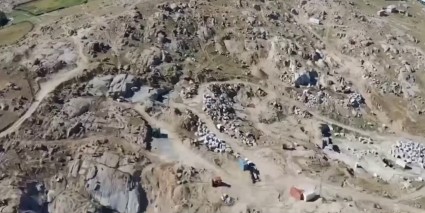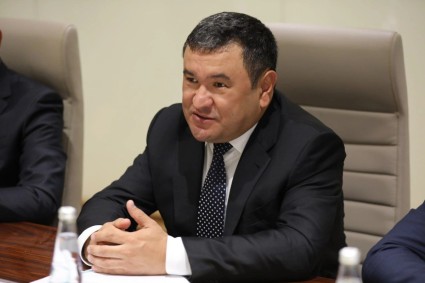The European Bank for Reconstruction and Development published its latest Regional Economic Prospects (REP) report, according to which the economy of Uzbekistan is set to grow by 5.6 per cent in 2021 and 6 per cent in 2022. The REP is expecting private consumption and investment to rebound as well.
According to the report key sectors of the national economy such as services, general industry, construction and agriculture have all recorded growth this year. It notes that important market reforms, including privatisation of state-owned enterprises and banks, continue despite the pandemic.
In Central Asia overall, the outlook has also been revised up, although the recovery is far from uniform. The region’s economy is seen growing 4.5 per cent in both 2021 and 2022, thanks to higher commodity prices, which benefit commodity exporters, as well as recovering remittances.
With growth of 4.2 per cent in 2021, the recovery of emerging economies in eastern Europe, Central Asia and northern Africa from the Covid-19 pandemic is gathering pace, the European Bank for Reconstruction and Development (EBRD) says in its latest Regional Economic Prospects report, published today.
This is an upward revision from the 3.6 per cent the Bank forecast for 2021 in its previous report in October 2020. For 2022, the EBRD expects further solid economic expansion of 3.9 per cent. The contraction in output in 2020 was also milder than previously forecast (2.3 per cent rather than 3.9 per cent) thanks to a better overall economic environment late last year due to strong exports and fiscal support.
EBRD Chief Economist Beata Javorcik said: “Although the revised forecasts give reason to be optimistic, huge uncertainty remains with regard to the path of the Covid-19 Delta variant, which poses particularly significant risk for countries that have made less progress on vaccination and for economies highly reliant on international tourism. The picture for 2020 is diverse. While several countries in central Europe and the Baltic states performed well compared with many advanced European economies, thanks to a strong rebound in goods exports, economies heavily reliant on tourism were hard hit. And in countries afflicted by challenging economic circumstances prior to the pandemic, Covid-19 only compounded existing problems.”
The increasing rollout of vaccination programmes and improvements in the public health situation have allowed for a gradual withdrawal of social-distancing measures and other restrictions. As a result, economies have restarted. Industrial production and retail sales have largely recovered and the mobility of people in the regions where the Bank invests has, on average, mostly returned to pre-pandemic levels.
Higher commodity prices have boosted the revenues of commodity exporters and demand for manufacturing exports has been strong. Manufacturing exporters are benefiting from a temporary shift away from services towards manufacturing.
However, the outlook for international tourism remains highly uncertain due to the persistence of widespread travel restrictions, so tourism-dependent economies continue to suffer. Foreign direct investment, meanwhile, remains far below pre-crisis levels in most of the regions where the EBRD invests.
Higher commodity prices, increased demand for manufactured goods, currency depreciation and higher inflation in trading-partner countries have pushed up inflation in the EBRD regions (by an average 0.8 percentage point relative to pre-pandemic levels), despite slack in the labour markets in many economies.
The headline numbers also hide significant differences in the impact of Covid-19 on individuals, with the young and those with lower levels of education and income particularly affected.
Furthermore, fiscal vulnerabilities have increased as large stimulus packages have boosted public debt-to-gross domestic product (GDP) ratios in the EBRD regions, by an average 11 percentage points . In many economies, public debt is now at levels last seen during the transition recession of the early 1990s and may rise further. While bankruptcies have so far remained contained owing to extensive policy support, vulnerabilities may surface when government support measures are withdrawn.
Professor Javorcik added: “The economies in which we invest have made progress on narrowing the digital divide over the past year, although it is still the case that richer households, more educated individuals and those residing in urban areas are more likely to make purchases online. This pattern is stronger in poorer countries.”
While average borrowing costs remain low, on average, and interest payments remain stable, some countries have seen sharp increases in interest payments.
Forecasts are highly sensitive to the path of Covid-19 infection, assumptions as to government policy and the effectiveness of policy actions to limit persistent economic damage. Country-specific policy initiatives underpinning the recovery are summarised in the EBRD’s Coronavirus response in 2021: building back better.












